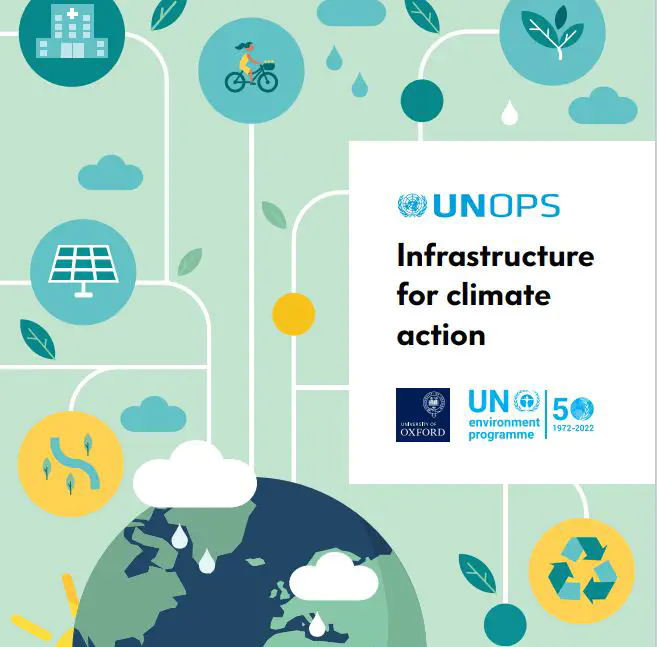Infrastructure centrally important to achieving the Paris Agreement and the SDGs

Published ahead of COP26, this new report highlights the key role that infrastructure plays in delivering climate action and sustainable development. Developed through collaboration between UNOPS, the United Nations Environment Programme (UNEP) and the University of Oxford, it finds that infrastructure is responsible for 79 per cent of all greenhouse gas emissions, and accounts for 88 per cent of all adaptation costs.
Despite recognition of the need for action, policy makers face challenges in understanding where resources should be allocated, and which practical actions should be prioritized, to maximize progress. Through a systematic assessment of global research, this report offers new insights to help address this challenge.
The largest sources of greenhouse gas emissions are associated with the energy, transport and buildings sectors (the last of which include homes, offices and schools). In an increasingly connected world, and with the COVID-19 pandemic transforming the way we work, learn and socialize, emissions from the digital communication sector are expected to rise. However, to the extent that digital systems decrease our reliance on the transport and building sectors (e.g. through reduced commuting and remote working), they have the potential to offset emissions and reduce total greenhouse gas emissions overall. 54 per cent of all future adaptation costs will need to be spent on the water sector, more than all other sectors combined. These costs originate from hazard protection provided by this sector that can reduce risks from floods, sea level rise, storm surge events, and other climate impacts. Whilst traditional built protective infrastructure (e.g. sea walls) will play an important role in risk reduction, nature-based solutions (such as reforestation, mangroves and wetlands) represent an effective and resource-efficient alternative that can offer a multitude of co-benefits including carbon sequestration and the enhancement of habitats. Policies that protect those exposed to hazards, in particular those most vulnerable within society, will also play a critical role in managing overall climate risk.
As we rapidly approach the 2030 milestone for the achievement of the Paris Agreement and SDG targets, and in the face of a climate emergency, action is desperately required to reduce climate change and its harmful impacts, as well as ensure that development is sustainable, resilient and inclusive. The research synthesized within this publication highlights the transformative role that infrastructure investments can have, including which sectors have the greatest potential to drive sustainable development, and opportunities to work in a holistic and integrated way to maximize positive impacts. Practical actions and case studies highlight tangible routes to action, while policy priorities show where efforts can be targeted to take this transformation to scale
Download the full Infrastructure for Climate Action report from the UNOPS website.